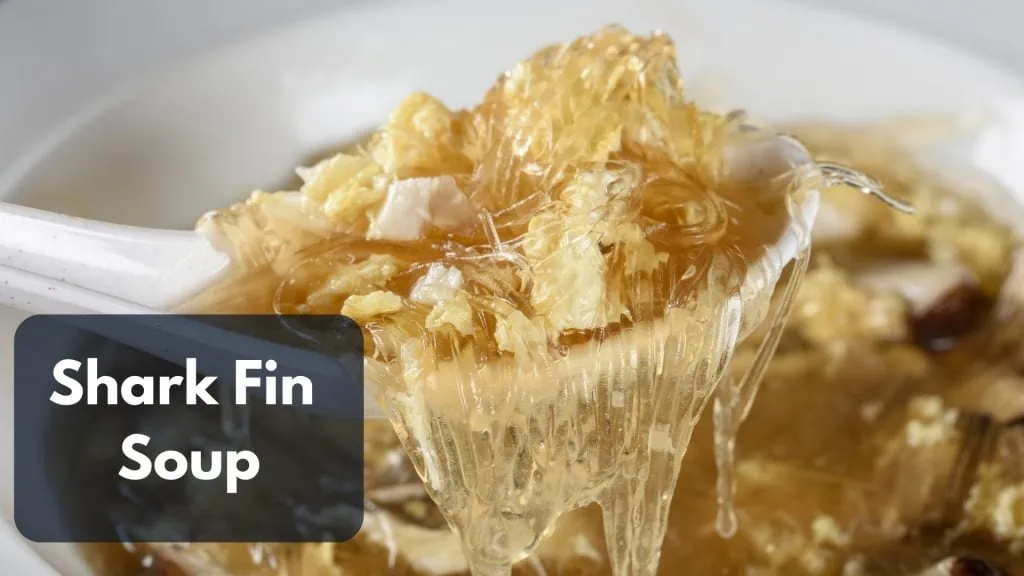Shark meat may seem like an unusual food, but it’s actually consumed in many parts of the world. The flavor, texture, and preparation of shark meat vary depending on the specific type. Here’s a complete guide to everything you need to know about the taste and culinary uses of this unique ingredient.
You might also like to read: What does dolphin taste like?
An Overview of Shark Meat
Shark belongs to the elasmobranch fish family, meaning they have a cartilaginous skeleton rather than bones. There are over 500 species of sharks, but only certain types are regularly caught for human consumption.
Some of the most commonly eaten shark varieties include:
Shark meat is an especially popular ingredient in Asian cuisines. Coastal communities in places like Japan, Sri Lanka, and India prize it for its nutritional content and supposed health benefits.
In Western cultures, shark meat is harder to find outside of specialty stores and restaurants. However, it’s growing in popularity as more people seek out exotic and sustainable seafood.
See also: What tastes better, Marlin or Swordfish?

Flavor and Texture
So what does shark actually taste like? Here’s a breakdown of its flavor profile:
- Meaty, mild flavor – Shark has a mild, subtly sweet taste similar to chicken or other white meat. The meatiness comes from its high protein content.
- Hint of fish – There is a slight fishy flavor, but it’s much more subtle compared to oily fish like salmon. This mild taste makes it suitable for a wide variety of preparations.
- Ammonia odor – Sharks expel toxins through their skin, which can make the unprepared meat smell strongly of ammonia. Proper bleeding and soaking in milk or saltwater removes this odor and firms up the texture.
The flesh ranges from pink to white in color. When cooked, it takes on a light, flaky texture reminiscent of crab or lobster meat. The mouthfeel is moist without being fatty or chewy.
Overall, shark has a very mild, slightly sweet taste that lends itself well to both Asian and Western-style recipes.
Health Benefits and Risks
In many food cultures, shark meat is prized for its nutritional content. Some of the health benefits attributed to eating shark include:
- High protein – Shark is a lean source of protein with a 100g serving providing around 20g. The protein content varies by species. Dogfish shark, for example, contains even more protein than salmon.
- Omega-3 fatty acids – The meat contains heart-healthy fats, although at lower levels than oily fish. Mako shark has one of the higher omega-3 contents.
- Vitamins – Shark meat provides B-vitamins, vitamin D, selenium, and other essential nutrients. Species like cod and mako are especially high in vitamin A.
However, there are also some health risks to consider with shark meat:
- Mercury content – As apex predators, sharks accumulate high levels of mercury. Pregnant women and young children should avoid or limit consumption.
- Marine toxins – Biotoxins like ciguatera can accumulate in shark meat, causing a foodborne illness called ciguatera fish poisoning.
- Parasites – Raw or undercooked shark meat may contain worms or other parasites. Proper handling and thorough cooking mitigate this risk.
Overall, eaten in moderation as part of a balanced diet, shark meat can be a nutritious addition to your diet. Those at higher risk from mercury exposure should take extra care to avoid overconsumption.
How to Prepare and Cook Shark Meat
Shark meat requires careful preparation and cooking to avoid any “fishy” flavors and textures:
- Bleeding – Draining the blood prevents ammonia from building up in the tissues. Bleed the shark as soon as it’s caught.
- Soaking – Before cooking, soak the meat in vinegar, lemon juice, or saltwater for up to an hour to firm up the flesh. Milk is another popular soaking liquid.
- Marinating – Marinades further tenderize shark meat and add flavor. Acidic ingredients like vinegar or citrus work especially well to prevent any residual fishiness.
- Cooking – The meat holds up well to almost any cooking method including grilling, pan-frying, baking, or even soup. Cook shark to an internal temperature of at least 145°F to destroy any parasites. The flesh turns from pink to white when fully cooked.
4 Delicious Ways to Eat Shark Meat
Once you’ve properly prepared the shark fillets, steaks, or other cuts, it’s time to cook. Here are some of the most appetizing ways to serve this exotic protein:
1. Teriyaki Shark Skewers
This simple preparation allows the mild flavor of the shark to shine. Marinate cubes of meat in a homemade teriyaki sauce, then thread onto skewers and grill to perfection.
2. Pan-Seared Shark with Lemon Butter
Pan-fry seasoned shark steaks in butter, then top with fresh lemon juice and parsley. The buttery pan sauce complements the subtly briny meat.
3. Cajun Blackened Shark
Rub shark fillets with Cajun spice mix then sear in a cast iron skillet to create a crispy blackened crust on the meat. The spices pair beautifully with the mild flavor.
4. Shark Veracruzana
Saute shark in tomato sauce with olives, capers, jalapenos and fresh herbs. This flavorful Mexican preparation brings out the best in the meat.
The mild taste and flaky texture allow shark to work equally well in Asian stir-fries, Greek lemon soup, or Caribbean stews. It’s a versatile ingredient that adapts well to global flavors.

Shark Fin Soup Controversy
Shark fin soup is a controversial dish that involves cutting off the fins of live sharks, then throwing the maimed animals back into the ocean to drown or bleed to death. This unethical practice, known as “shark finning“, has driven some species to the brink of extinction only to make soup from the fins.
The fins themselves are tasteless. All flavor in the soup comes from the broth and other ingredients like chicken or ham. Many consider shark fin soup immoral for both environmental and ethical reasons. Refusing to eat the dish helps reduce the demand that fuels shark finning.
An Exotic Ingredient With Culinary Potential
Far from the man-eating monster of Hollywood legend, sharks can provide a uniquely tasty and nutritious meat. With growing concerns over the sustainability of wild fish stocks, shark represents an intriguing and underutilized alternative protein source.
Conclusion
Sourced and handled responsibly, shark meat offers a tender, mildly flavored ingredient to add to your culinary repertoire. It brings a touch of oceanic exoticism to everyday meals.












